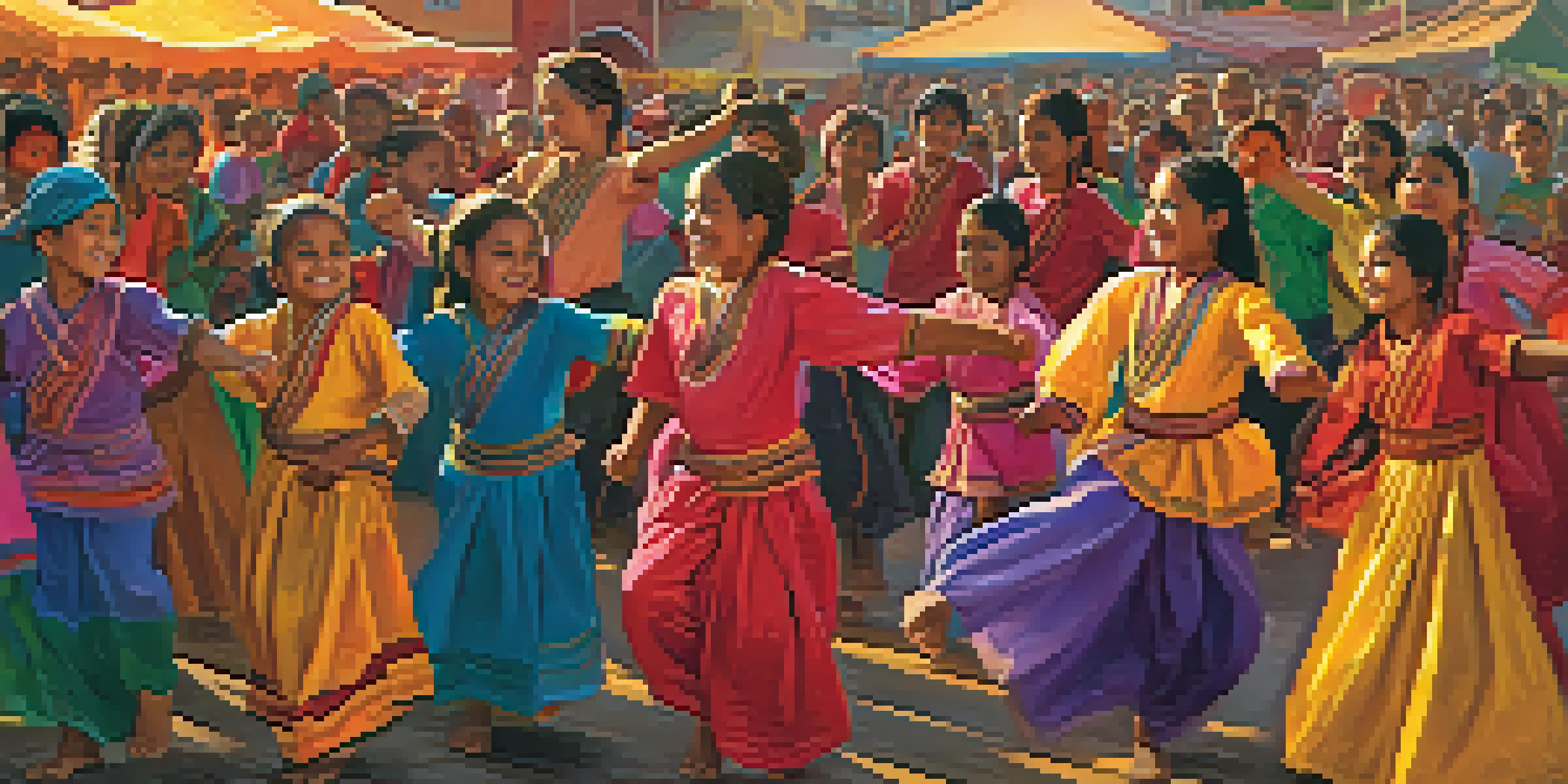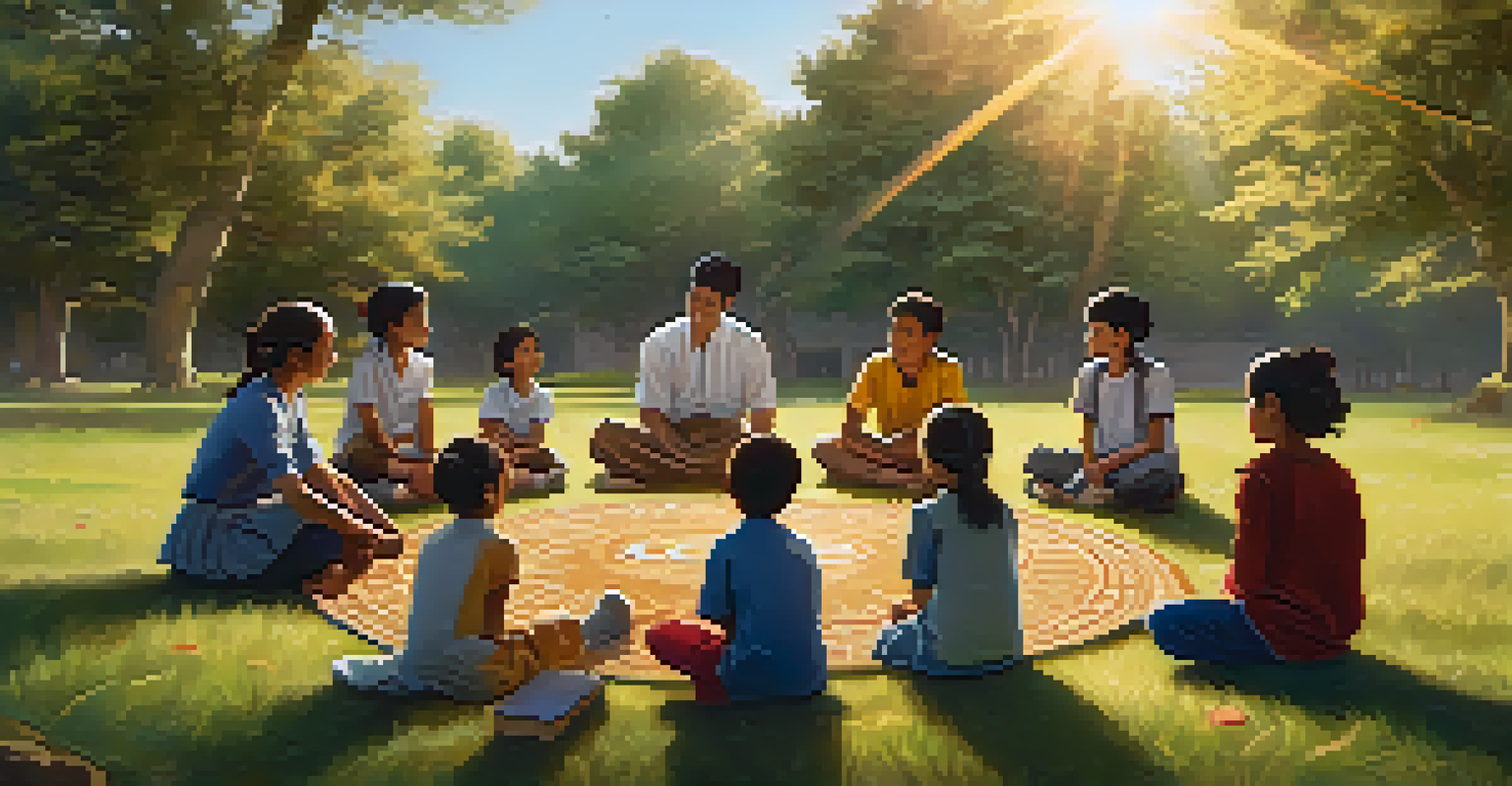Cultural Influences on Dance and Play in Childhood

Understanding the Role of Culture in Childhood Activities
Culture plays a pivotal role in shaping how children engage in play and dance. From traditional games to contemporary forms, the cultural background influences not only the activities but also the values children learn through them. For instance, in many Indigenous cultures, storytelling dances blend history with movement, offering children a sense of identity.
Play is the highest form of research.
Moreover, cultural norms dictate what is considered acceptable or popular in childhood activities. In some cultures, group play is encouraged, fostering teamwork and social skills, while in others, individual pursuits might be more valued. This diversity enriches children's experiences, allowing them to learn from various perspectives.
Ultimately, understanding these cultural influences helps educators and parents appreciate the significance of diverse play and dance forms. By recognizing and celebrating these differences, we can create more inclusive environments that cater to children's varied backgrounds.
Traditional vs. Contemporary Dance Forms in Childhood
Traditional dance forms often carry deep cultural significance and are passed down through generations. For many children, participating in these dances is more than just movement; it’s a way to connect with their heritage and understand their community's values. For example, children in African cultures might learn intricate dance steps that tell stories of their ancestors.

On the other hand, contemporary dance forms, influenced by global trends and technologies, offer children a space to express themselves creatively. Styles like hip-hop or street dance can empower kids to explore their identities and emotions in a modern context. This blend of tradition and innovation can lead to a rich tapestry of movement.
Culture Shapes Play and Dance
Children's play and dance are deeply influenced by their cultural backgrounds, impacting the values and skills they learn.
Encouraging children to engage with both traditional and contemporary forms of dance can foster appreciation for their roots while also embracing modern influences. This balance helps them develop a well-rounded understanding of their cultural identity.
The Impact of Media and Technology on Dance and Play
In today's digital age, media and technology have a profound influence on how children experience play and dance. Platforms like YouTube and TikTok provide instant access to various dance styles, inspiring kids to try new moves and create their own choreographies. This accessibility can spark creativity and foster a love for movement.
Dance is the hidden language of the soul.
However, the overwhelming presence of media can also lead to challenges, such as unrealistic body images or trends that overshadow local cultural practices. Parents and educators need to guide children in navigating these influences, encouraging them to appreciate their unique backgrounds while also enjoying global trends.
Ultimately, the intersection of technology and dance offers exciting opportunities for children to connect with peers worldwide. By combining local traditions with global trends, kids can create their own unique dance styles that reflect their diverse influences.
Play as a Reflection of Cultural Values
Play is often a mirror of cultural values and beliefs, revealing what a society prioritizes. In cultures where community and cooperation are emphasized, children might engage in more collaborative games that promote teamwork. Conversely, in cultures that value individual achievement, competitive play may be more prevalent.
For example, in many Western cultures, sports are a significant part of childhood, teaching valuable life skills such as discipline and teamwork. In contrast, traditional games in other cultures might focus on storytelling or skill development, highlighting different aspects of childhood learning.
Tradition Meets Modern Expression
Balancing traditional and contemporary dance forms allows children to connect with their heritage while embracing creativity.
Recognizing these variations in play can help caregivers and educators design activities that resonate with children's cultural backgrounds. This understanding allows for a more inclusive approach that respects and celebrates diversity in play.
Language and Its Influence on Dance and Play
Language is a critical aspect of culture that shapes children's experiences in dance and play. Many traditional dances come with specific songs or chants that carry historical significance, teaching children about their heritage through rhythm and movement. This connection to language enhances the overall experience, making it more meaningful.
In addition, the language of play often varies across cultures. Children might use specific terms or phrases that reflect their cultural context during games, creating a unique social environment. Understanding these nuances can help educators facilitate better communication and inclusivity among diverse groups.
Encouraging children to explore both the language of their culture and the movements associated with it can deepen their appreciation for their identity. This intertwining of language and movement fosters a holistic understanding of cultural expression.
Community Engagement in Dance and Play
Community engagement is vital in shaping how children experience dance and play. Events like local festivals or cultural days provide opportunities for children to participate in traditional dances and games, reinforcing their connection to their community. These gatherings allow children to see their culture in action, fostering pride and belonging.
Additionally, community spaces such as parks or community centers often serve as hubs for cultural activities. Here, children can learn from one another, sharing their unique play traditions and dance styles. This exchange enriches their experiences and broadens their understanding of different cultures.
Community Engagement Enriches Experience
Participating in community events fosters children's sense of belonging and pride in their cultural identity.
By promoting community engagement, we can create environments where children feel valued and empowered to express themselves. Celebrating cultural diversity through dance and play strengthens community ties and enhances the overall childhood experience.
The Role of Educators in Cultural Dance and Play
Educators play a crucial role in fostering an appreciation for cultural dance and play among children. By incorporating diverse activities into their curriculum, teachers can expose children to various cultural practices, enriching their learning experiences. For instance, introducing traditional games from different cultures can teach children about teamwork and history.
Moreover, educators can encourage children to share their unique cultural experiences, promoting inclusivity in the classroom. This not only enhances mutual respect but also helps children build confidence in expressing their identities. When children feel their culture is celebrated, they are more likely to engage actively in learning.

Ultimately, educators who embrace cultural diversity in dance and play can shape a more inclusive environment. This approach not only enriches children's lives but also prepares them to thrive in a multicultural society.